The way it has been described since, yesterday’s CPI estimates for last month represented a seismic shift in the inflation debate. There is no more argument, apparently, and if that wasn’t apparent enough then today it was followed up with even more highly-touted evidence. Producer prices, the PPI, came up even more over-the-moon than those for consumers.
The commodities portion, no surprise, these were a huge contributor right off the bat. Year-over-year, April 2021’s index number was 17.25% higher than April 2020’s. Base effects, however, were a huge part of it, much more than the more than the limited contributions they made for the April CPI. Compared to April 2019, the commodity PPI was up just 7.6%, or a rather tame 3.7% annual rate.
The same for the headline; overall, big jump (9.42%) compared to last year’s trough, the highest since the summer of 2008. Up only 3.7% versus two years ago, for an annual rate of 1.8%. Perhaps most importantly, given this is a seasonally-adjusted series, the monthly change in April from March was a tiny one, just 0.28% which leans more in favor of “transitory.”
The core PPI rate performed slightly hotter than its full complement counterpart: in April 2021 up 4.16% on the year, 4.5% against April 2019, and a monthly pickup of 0.66% over March 2021. Still more like “transitory” than not.

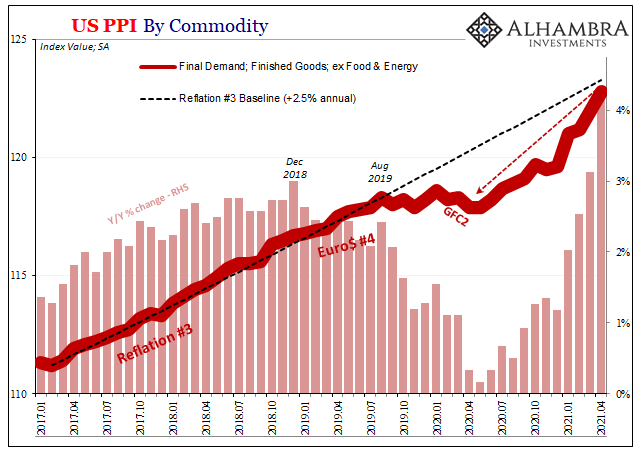
Since those huge annual comparisons, at least, in the various PPI series were thrown around in the aftermath of the mammoth CPI gains, you’d expect the bond market to be in the midst of an epic meltdown. Or certainly a noticeable tailspin. No less than a sizable rout.
Bid back?
While yields rose on Wednesday in the aftermath of the consumer price estimates, they declined today with some of them in the middle of the curve taking back more than half of what had been a relatively normal selloff. The 5-year UST, for instance, jumped from 80 bps to 87 bps, but was back to 84 bps today. The 10s, 164 bps to 169 bps and then steadily lessened today down 166 bps as if the PPI had tipped the balance back toward calm.

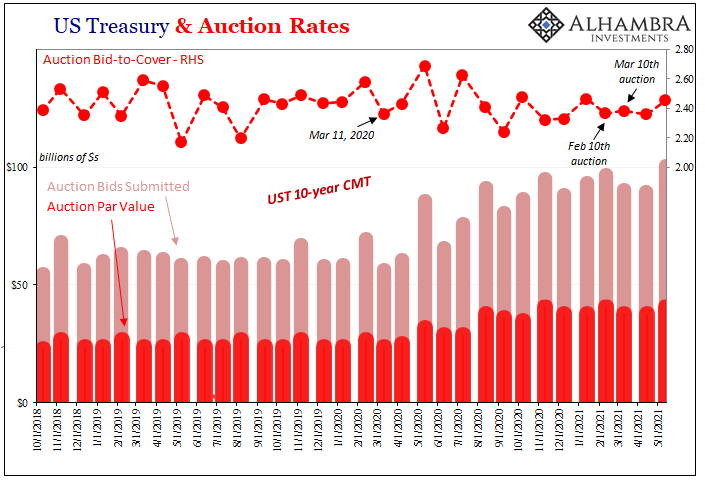
Perhaps most interesting, the Treasury Department had auctioned $41 billion in new (not reopened) 10-year notes mere hours after the shocking CPI figures. Having no trouble whatsoever selling them, more than $100 billion in bids and a median accepted rate of 1.629%, you’d think it would’ve more closely resembled that awful 7-year note auction from February 25 – if either that one or this one had been most affected by reflation/inflation fears.
Almost three months later, even with these inflation estimates, there doesn’t seem much of either (no surprise considering what really happened to the 7s on Feb 25). That may be more closely related to what’s instead going on at the front of the curve. Selling 4-week bills just this afternoon, it was the second weekly auction of the last three where the results were again zeroes across-the-board; high, median, and low rates.
The secondary market price concurred, its equivalent yield also worked out to zero at the close of today’s trading. This was the second secondary zero in the past three weeks.
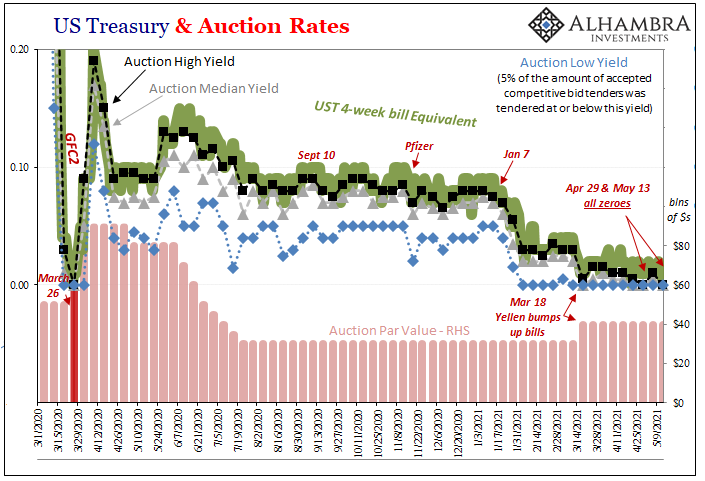
Even trading in TIPS betrayed little urgency. The 5-year breakeven rate, which is where most of the fuss has been concentrated during this current commodity craze, this shorter-run inflation expectation started Wednesday at 268 bps, gained just 4 from the CPI, and then gave back 7 in trading today to close at 265 bps, 3 lower than when the inflation frenzy began.
The 10-year TIPS breakeven was practically unchanged through the entire two-day episode, likewise a fraction lower now than when it started. The longer-term 5-year/5-year forward rate at 237 bps was actually bumped up on last week’s huge payroll miss and was basically unchanged this week.
For all the inflation hysteria everywhere else, you really have to wonder why so calm and even contradictory (given how low yields and especially real yields are right now) the bond market continues to be in this post-Feb 24-25-26 phase. Everything price-wise in the real economy keeps coming up hot if not epically so, and yet placidity rules in the one marketplace where inflation expectations are a centerpiece to all of its fundamental aspects (Fisherian).
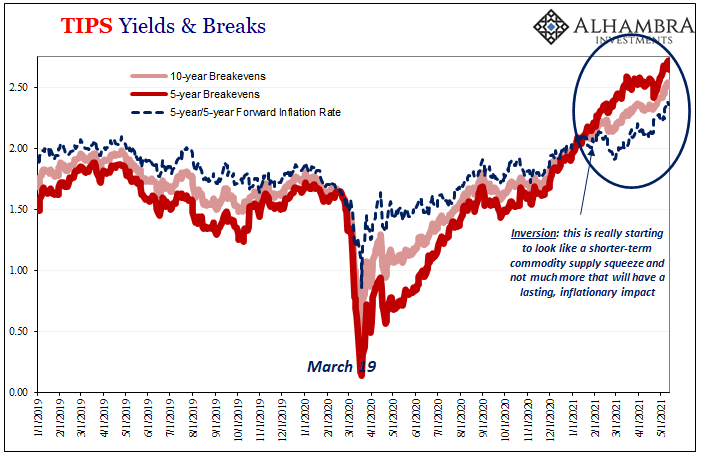
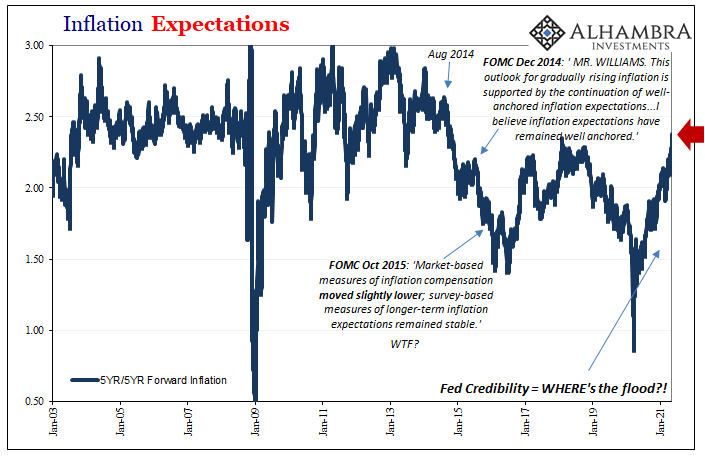
It’s almost like the bond market has been expecting all this, the reflation sell-off earlier in the year before February 24, but then surmised how the underlying economic condition (outside as well inside the US, global factors after all) aren’t likely to sustained such commodity, producer, or consumer price acceleration or advance for very long.
Transitory inflation is no inflation at all; unusually low nominal and real yields all around.
Maybe this all changes if the price estimates keep coming in hot month after month beyond this one (though oil is back to front-end contango and selling today), and bonds resume their previous upward turn having their collective minds changed by events. Balance of probabilities right now, however, have pretty firmly demonstrated relatively firm expectations even belief in “transitory” despite this week’s big CPI/PPI exacta.
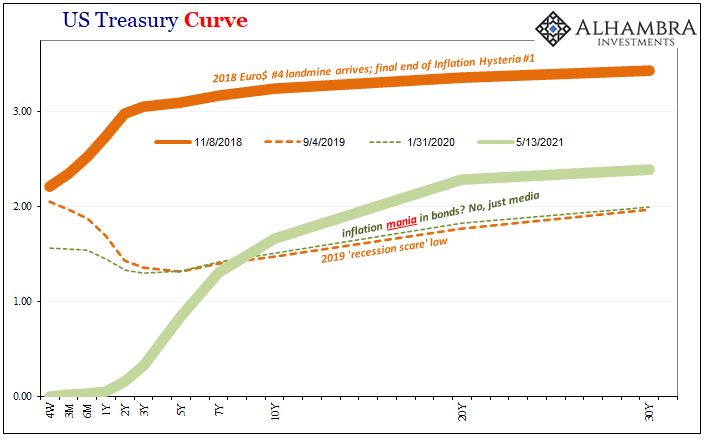
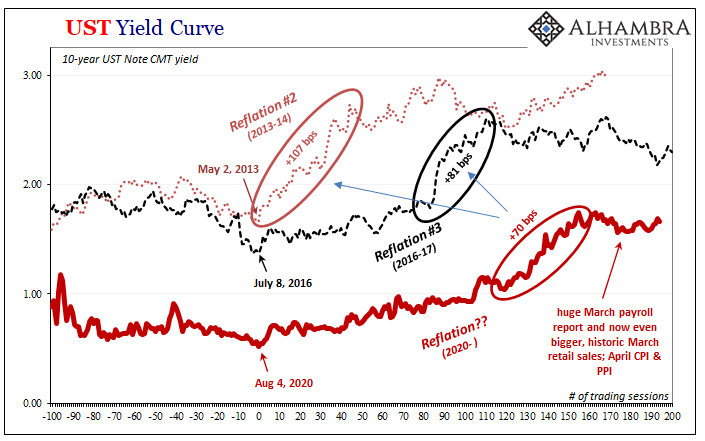
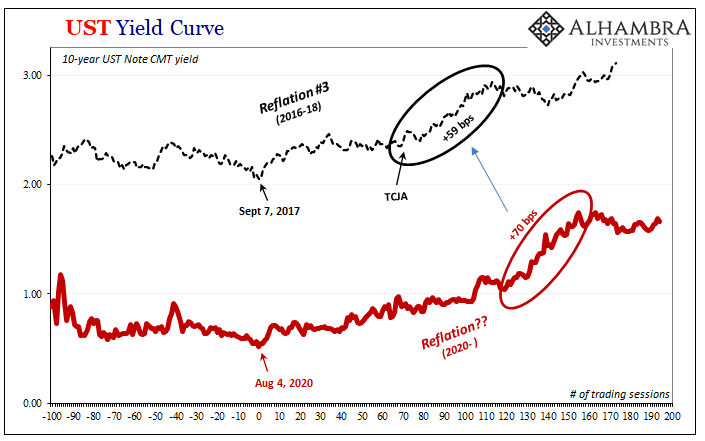
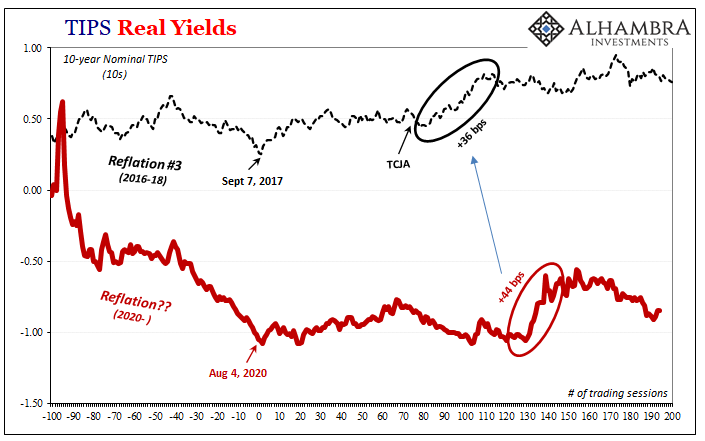
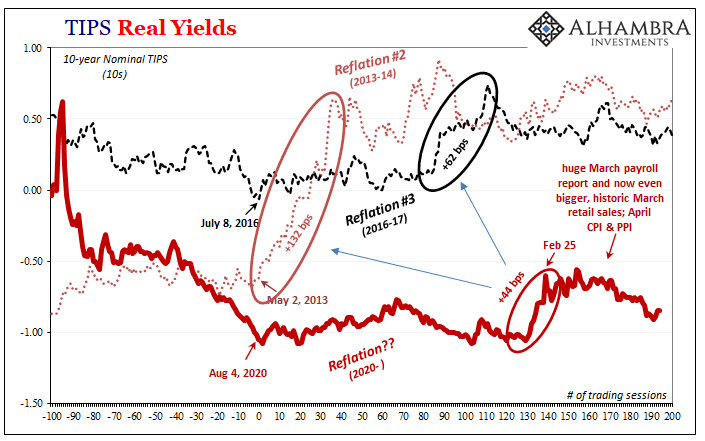


Stay In Touch